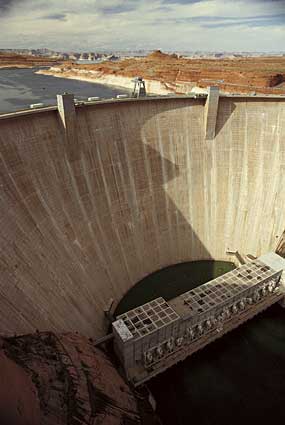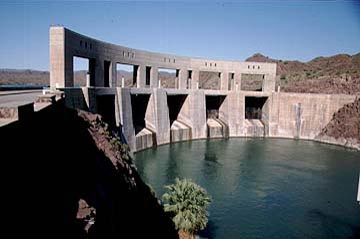dam
A dam is an artificial wall or embankment designed to hold back water. The water held back makes a reservoir (sometimes called a lake on maps).

 The Glen Canyon dam on the Colorado River in Arizona.
 The Parker dam is on the Colorado River where it runs along the border between Arizona and California.
A dam is a strong structure designed to go across a mountain valley and hold back water.
The dam can be made of concrete, in which case it is usually thin and high, or it can be made of rock and soil, in which case it is lower and broader.
Dams are important because they hold back river waters and so prevent floods in lowlands beyond the mountains. They also store water for use in irrigation, or for hydro-electric power use or to keep rivers flowing in times of drought. Reservoirs can also be used for recreation.
The construction of dams and reservoirs may destroy much of the natural environment.
Earth and rock
dams are broad structures with gently sloping sides and a very wide base. They are used only for
dams of modest height. An earth dam is usually faced with stone so that it is not eroded by
running water or lake waves.
Masonry and concrete dams are used for the world's tallest dams, or where a dam is
designed to block a narrow valley. The world's biggest dam is the Three Gorges dam on the Yangtze River in China. It is currently under construction and due for completion in 2009.


|